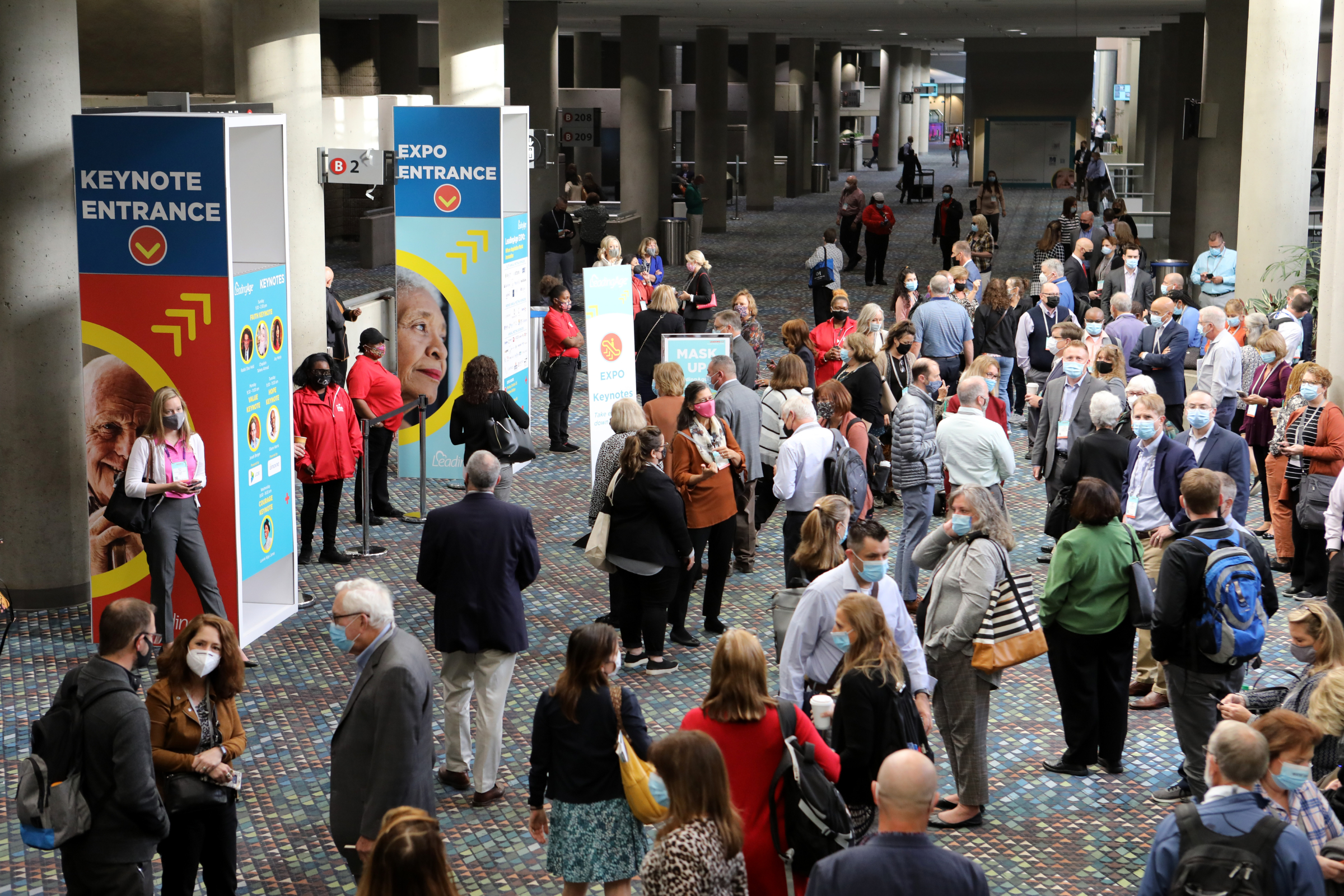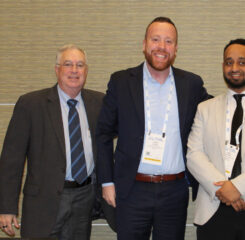Collaborative Care Tech Summit Shows Automation and Robots Can Aid Workforce
I am a big believer in the significant benefits automation and robotics bring when we have the appropriate use cases, the right technology solution, change management approach, and implement them correctly! I know they have the potential to alleviate some of the workforce challenges we face in this sector.
That’s why I chose technology, including automation and robots, as workforce aids as the key theme at the Collaborative Care Tech Summit 2022, which LeadingAge CAST held online June 7-8, 2022. This year, the premier conference on technology for leaders in long-term and post-acute care (LTPAC) and their partners focused on “connecting and strengthening the workforce” through technology.
I’d like to thank McKnight’s Senior Living and McKnight’s Long-Term Care for covering the summit and to share some of their takeaways.
Tech for Workers and Older Adults
Technology is important to workers, and good technology solutions can create an organization where employees want to come to work, according to Amazon Senior Business Development Manager for Senior Living Ginna Baik. “‘Good technology fulfills needs and wants,’ senior living tech expert says” quoted her comments, including that staff members “want more money and to do less work, and they want the whole experience automated.” Baik presented a keynote, The Future of Aging Services: Workforce, Relations, and Technology.
Broadband access is important in providing technology to older adults, said Baik. Broadband access is a LeadingAge CAST Technology and Telehealth Policy Priority. LeadingAge CAST has also produced Broadband in Affordable Housing resources.
Baik also shared that robots are the future of senior living, and that voice technology is one of the biggest trends in long-term care because it “equalizes tech fluency in communities to get immediate adoption where connection can happen.”
Technology that Saves Staff Time
In “Provider staff time ‘dramatically reduced’ by taking resident vitals with key tech,” McKnight’s Long-Term Care featured Christian Living Communities. This organization halved the time that caregivers spent measuring vital signs after integrating new machinery into its electronic health records system through LeadingAge Gold Partner with CAST Focus PointClickCare, which permits medical device integration. New vital sign machines and scales automatically upload correct patient information, said the article.
Jayne Keller, chief operating officer of Christian Living Communities, is quoted as saying the savings are in “reducing the burden on our team members’ documentation and all of the time [spent] to do some of these mechanical things when really what they want to do is care for people.” Keller spoke on the panel Efficiencies Gained from Using Health IT Correctly!
The Role of Robots and Automation
When it comes to introducing robots, think strategically about the strengths of robots and of staff members, suggested panelists for The Case for Physical Robotic Applications: LTPAC Use Cases & ROI.
“Think about the tasks you spend time on that are not adding value and how to wipe those out,” said Justin Smith, innovation and technology manager of Direct Supply, a LeadingAge Bronze Partner with CAST Focus. Smith was quoted in “Robotics, automation can help solve staffing, efficiency challenges: panelists” in McKnight’s Senior Living.
Army Distaff Foundation Vice President of Development and Strategic Operations James Michels, whose company owns and operates life plan community LeadingAge Provider Member Knollwood, noted the importance of involving caregivers and residents in developing social assistive robotic devices. Michels also discussed how exoskeleton rehabilitative therapy, or a “bionic suit,” helped a resident regain mobility and happiness after a stroke.
The panel featured CAST Patron Cypress Living, which employed Servi robots as food runners in its dining rooms to enable employees to spend more time with residents. The article quoted Vice President of Innovation Joe Velderman, a CAST Commissioner, saying the robots reduced the tasks of front house culinary services employees by 330 hours per week. The community reinvested the savings into increased wages.
McKnight’s Long-Term Care News also covered the panel discussion Driving Efficiencies and Savings through Data Analytics & Soft Robotic Process Automation (RPA) in Healthcare.
A custom app, integrated with human resources software, automated approval processes, changes, employment terminations, schedule changes, and other tasks previously performed on paper, and it streamlined hiring, according to Travis Gleinig, chief information officer of United Methodist Communities, a LeadingAge Provider Member.
CAST Patron HumanGood Vice President of Information Technology Services / Advanced Data Analytics Tim Jones pointed to the importance of data in increasing efficiency. “We’re focused on a digital transformation — smart operations using data analytics.” Jones was also quoted as saying that RPA can take on tedious tasks and let employees focus on residents and relationship-building rather than on spreadsheets and number-crunching.
Contact Me
I hope you find these summit learnings helpful and that you will be able to join future LeadingAge CAST events. If you missed the summit, you can still register and watch the sessions recordings on-demand, with the exception of the ONC’s Keynote by Dr. Thomas Keane. As always, if you have news to share with CAST or if I can be of assistance in any way, please do not hesitate to contact me.

Most Recommended
October 15, 2025
 Shutdown Week Three: Impact of Ongoing Closure on Affordable Housing
Shutdown Week Three: Impact of Ongoing Closure on Affordable Housing
December 10, 2025
Fiscal Year (FY) Funding 2026
October 07, 2025
Immigrant Workforce Matching Program Brings Workforce Relief
Recently Added
December 17, 2025
 Colleagues on the Move, December 17, 2025
Colleagues on the Move, December 17, 2025
December 16, 2025



